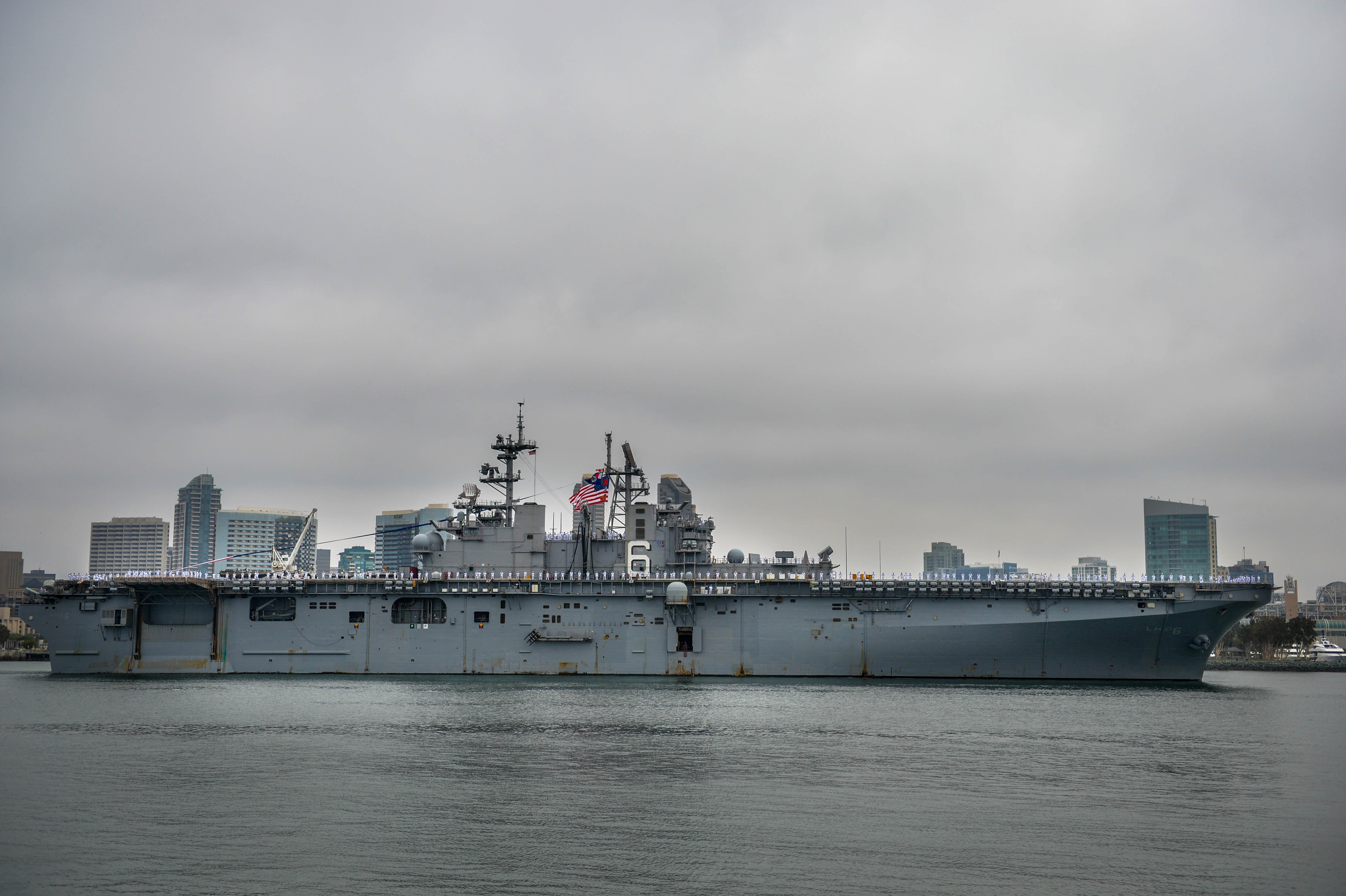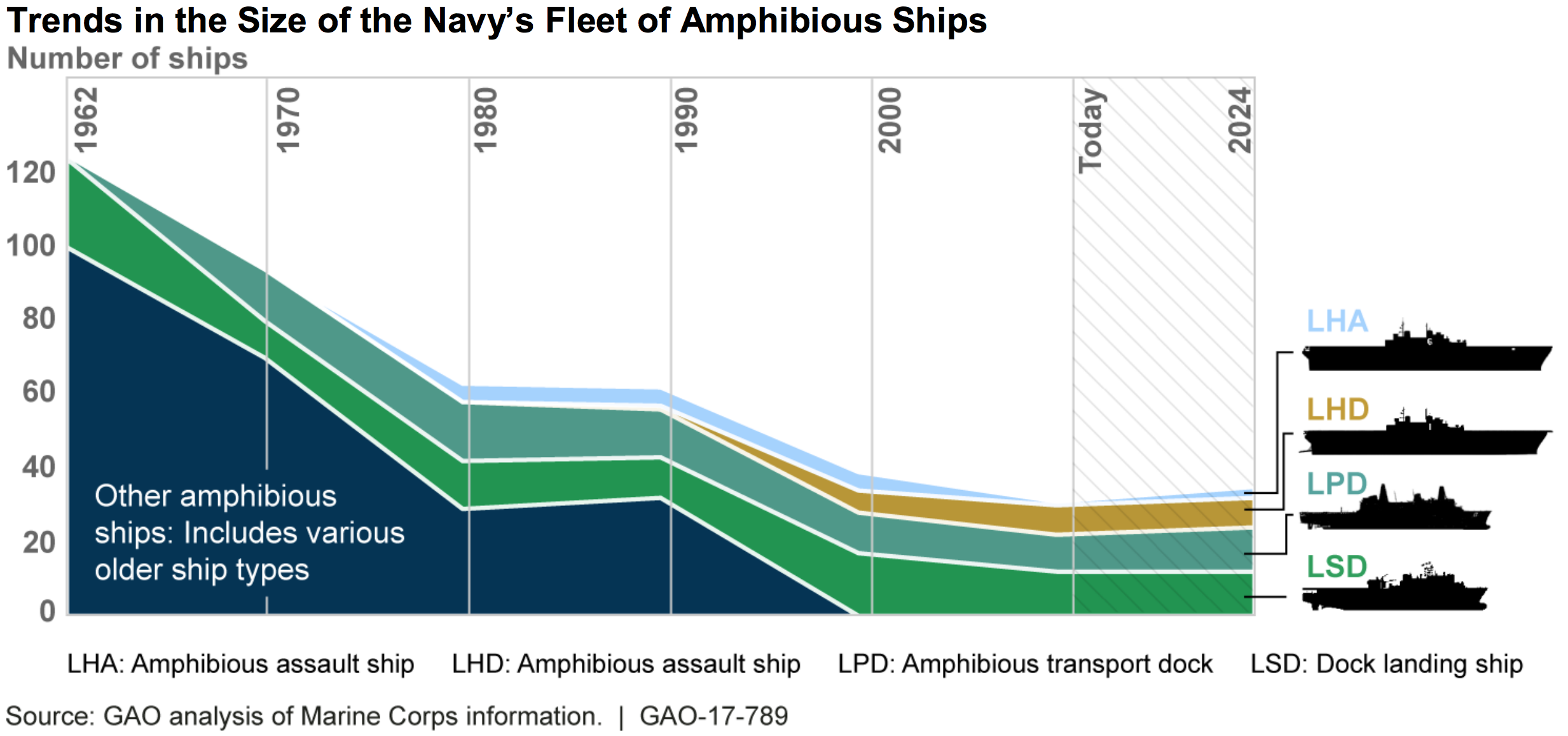
This post has been updated to correct the amphibious ships that suffered mechanical problems preventing their full participation in RIMPAC. USS Boxer was sidelined with mechanical difficulties and could not participate in RIMPAC SOCAL. USS Portland (LPD-27) served as the 3rd Fleet command ship for the duration of the exercise. This post has also been updated to clarify the role of USS Bonhomme Richard during RIMPAC.
THE PENTAGON — The two U.S. amphibious warships that were planned to be central to the Rim of the Pacific 2018 exercises were unable to fully participate in the event due to mechanical failures that highlight continued readiness problems with the Navy’s amphibious fleet.
The amphibious assault ship USS Bonhomme Richard (LHD-6) was set to lead the amphibious portion of the Rim of the Pacific 2018 exercise, but it spent the second half of the exercise tied to a pier in Pearl Harbor. USS Boxer (LHD-4) was set to be a key platform in Southern California RIMPAC SOCAL but was sidelined before the exercise.
In December, half of the Navy’s 31 amphibious ships were in maintenance as a result of short-term spending bills and irregular funding, Vice Adm. Andrew Lewis, deputy chief of naval operations for operations, plans and strategy (OPNAV N3/N5), said at a House Armed Services readiness subcommittee hearing.
Bonhomme Richard was set to be the command ship for the task force commander Royal Australian Navy Commodore Ivan Ingham. However, partway through the exercise the ship suffered a propulsion casualty and came back to port, USNI News understands. Ingham, his staff and the ship’s company still participated in the exercise from the pier, USNI News understands.
“USS Bonhomme Richard (LHD-6) is currently in port Pearl Harbor and is participating in RIMPAC 2018,” reads a U.S. 3rd Fleet statement to USNI News this week. Officials would not elaborate on why the ship was not underway.
Among the operations, the crew conducted was launching lightly loaded landing craft from Bonhomme Richard while it was pier-side.
Big deck amphib Boxer was set to host Mexican, Canadian, U.S. and Brazilian forces for an amphibious landing exercise. The lack of amphibious shipping in the Southern California portion of the exercise caused Brazil to drop out of the exercise, USNI News has learned.
“There was going be some more amphibious operations [in California]. One of the ships we had identified had some mechanical issues, so we were not able to get her out of maintenance in time to do that. … Most of the [Southern California] amphibious operations turned into land training with our partner nations and our Marines there at [Camp] Pendleton,” 3rd Fleet commander Vice Adm. John Alexander told reporters at a July 20 press conference at Pearl Harbor. “When the amphibious ship couldn’t get underway, Brazil decided they didn’t want to participate.”
When USNI News originally asked on July 2 why Brazil had dropped out of RIMPAC, U.S. Navy spokeswoman Lt. j.g. Ada Anderson said it was due to a “change in operational schedules.”

The high demand for a limited number of amphibious warships prompted a congressionally mandated study from the Government Accountability Office that was released in September. The GAO found that the 31 amphibious ships in the U.S. fleet were insufficient for the Marines to conduct training outside of the pre-deployment training needed for Amphibious Ready Group and Marine Expeditionary Unit training.
“The services have taken steps to address amphibious training shortfalls, such as more comprehensively determining units that require training. However, these efforts are incomplete because the services do not have an approach to prioritize available training resources, evaluate training resource alternatives, and monitor progress towards achieving priorities,” read the report. “The services are not well positioned to mitigate any training shortfalls.”





